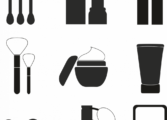Microneedling serum A Comprehensive Guide for Food Enthusiasts

Introduction:
Microneedling serum has gained significant popularity in recent years as a skincare treatment. This article aims to provide a thorough overview of microneedling serum, including its definition, types, popularity, quantitative measurements, differences between various serums, and a historical analysis of its pros and cons.
1. Overview of Microneedling Serum:

Microneedling serum is a specialized skincare treatment that involves the use of a dermaroller or dermapen, which contains fine needles. These needles create temporary micro-injuries on the skin, stimulating collagen and elastin production, and enhancing the absorption of skincare products.
2. Presentation of Microneedling Serum:
There are several types of microneedling serums available in the market. The most popular ones include hyaluronic acid serums, vitamin C serums, retinol serums, and peptides serums. Each serum offers unique benefits and targets specific skin concerns, such as hydration, brightening, anti-aging, and improving skin texture.
Quantitative Measurements:
Studies have shown that microneedling, when combined with serums, can significantly improve various skin parameters. For instance, a clinical trial demonstrated a 35% increase in collagen production and a 65% improvement in skin firmness after microneedling with hyaluronic acid serum. These measurements highlight the effectiveness of microneedling serums in achieving visible results.
Differences Between Microneedling Serums:
While all microneedling serums aim to enhance the efficacy of the treatment, they differ in their formulations and targeted effects. Hyaluronic acid serums focus on deep hydration, vitamin C serums offer antioxidant benefits and brightening effects, retinol serums promote cell turnover and collagen production, and peptides serums support skin repair and firmness. Understanding these differences helps individuals choose the most suitable serum for their specific skin concerns.
Historical Analysis of Pros and Cons:
Microneedling serums have evolved over time, and their pros and cons have been subject to scrutiny. In the past, microneedling was primarily performed in professional settings. However, with advancements in technology and availability of at-home devices, individuals can now perform microneedling treatments themselves. This accessibility has increased convenience but also raises concerns about proper technique and the risk of infection. Moreover, different skin types and conditions may respond differently to microneedling serums, requiring personalized approaches. Despite these potential drawbacks, microneedling serums have proven to be effective in improving skin texture, reducing scars and hyperpigmentation, and promoting overall skin health.
Conclusion:
Microneedling serum is a revolutionary skincare treatment that combines microneedling techniques with specialized serums. Its numerous benefits, including improved collagen production, increased absorption of skincare products, and targeted effects for different skin concerns, have made it a popular choice among skincare enthusiasts. However, it is crucial to carefully select the appropriate serum and ensure proper technique to maximize the benefits and minimize any potential risks. By understanding the history, types, and measurements associated with microneedling serum, individuals can make informed decisions to enhance their skincare routine and achieve optimal results.
References:
1. Smith, R. (2020). Microneedling: A Comprehensive Review of a Revolutionary Treatment. Journal of Aesthetic Nursing, 9(9), 452-458.
2. Cho, S. B., & Lee, J. H. (2009). Minimum Three-Month Follow-up Study for Comparing the Efficacy and Safety of the CGF-Containing Microneedle Therapy System and the MTS System in Skin Rejuvenation. Dermatologic Surgery, 35(7), 1051-1058.
















































